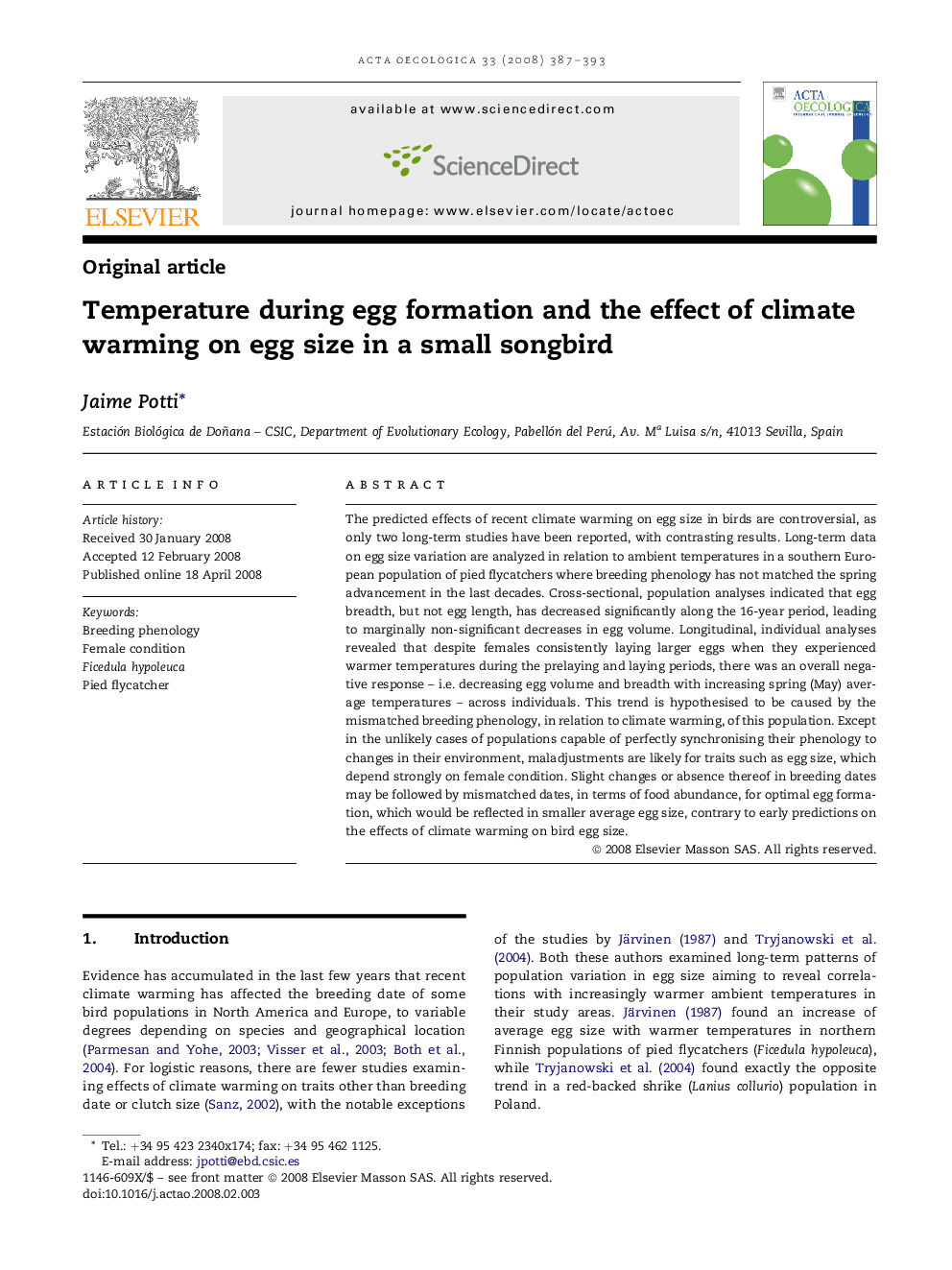| Article ID | Journal | Published Year | Pages | File Type |
|---|---|---|---|---|
| 4381560 | Acta Oecologica | 2008 | 7 Pages |
The predicted effects of recent climate warming on egg size in birds are controversial, as only two long-term studies have been reported, with contrasting results. Long-term data on egg size variation are analyzed in relation to ambient temperatures in a southern European population of pied flycatchers where breeding phenology has not matched the spring advancement in the last decades. Cross-sectional, population analyses indicated that egg breadth, but not egg length, has decreased significantly along the 16-year period, leading to marginally non-significant decreases in egg volume. Longitudinal, individual analyses revealed that despite females consistently laying larger eggs when they experienced warmer temperatures during the prelaying and laying periods, there was an overall negative response – i.e. decreasing egg volume and breadth with increasing spring (May) average temperatures – across individuals. This trend is hypothesised to be caused by the mismatched breeding phenology, in relation to climate warming, of this population. Except in the unlikely cases of populations capable of perfectly synchronising their phenology to changes in their environment, maladjustments are likely for traits such as egg size, which depend strongly on female condition. Slight changes or absence thereof in breeding dates may be followed by mismatched dates, in terms of food abundance, for optimal egg formation, which would be reflected in smaller average egg size, contrary to early predictions on the effects of climate warming on bird egg size.
